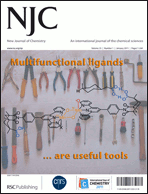
In academic publishing, a scientific journal is a periodical publication intended to further the progress of science, usually by sharing findings from research with readers. They are normally specialized based on discipline, with authors picking which one they send their manuscripts to.

The French National Centre for Scientific Research is the French state research organisation and is the largest fundamental science agency in Europe.

The American Chemical Society (ACS) is a scientific society based in the United States that supports scientific inquiry in the field of chemistry. Founded in 1876 at New York University, the ACS currently has more than 155,000 members at all degree levels and in all fields of chemistry, chemical engineering, and related fields. It is one of the world's largest scientific societies by membership. The ACS is a 501(c)(3) non-profit organization and holds a congressional charter under Title 36 of the United States Code. Its headquarters are located in Washington, D.C., and it has a large concentration of staff in Columbus, Ohio.
The Institute for Scientific Information (ISI) was an academic publishing service, founded by Eugene Garfield in Philadelphia in 1956. ISI offered scientometric and bibliographic database services. Its specialty was citation indexing and analysis, a field pioneered by Garfield.

Chintamani Nagesa Ramachandra Rao,, is an Indian chemist who has worked mainly in solid-state and structural chemistry. He has honorary doctorates from 84 universities from around the world and has authored around 1,800 research publications and 56 books. He is described as a scientist who had won all possible awards in his field except the Nobel Prize.
Physical Chemistry Chemical Physics is a weekly peer-reviewed scientific journal publishing research and review articles on any aspect of physical chemistry, chemical physics, and biophysical chemistry. It is published by the Royal Society of Chemistry on behalf of eighteen participating societies. The editor-in-chief is Anouk Rijs,.

Green Chemistry is a monthly peer-reviewed scientific journal covering every aspect of sustainable chemistry and its implementation in chemical engineering. It is published by the Royal Society of Chemistry and was established in 1999 by James Clark. Articles published in this journal are intended to be conceptually accessible to a wide audience. The editors-in-chief is Javier Pérez-Ramírez.

CrystEngComm is a peer-reviewed online-only scientific journal publishing original research and review articles on all aspects of crystal engineering including properties, polymorphism, target materials, and crystalline nanomaterials. It is published biweekly by the Royal Society of Chemistry and the editor-in-chief is Pierangelo Metrangolo. According to the Journal Citation Reports, the journal has a 2021 impact factor of 3.756. CrystEngComm has a close association with the virtual web community, CrystEngCommunity.

Industrial & Engineering Chemistry Research is a peer-reviewed scientific journal published by the American Chemical Society covering all aspects of chemical engineering. The editor-in-chief is Phillip E. Savage.

Philosophical Transactions of the Royal Society A: Mathematical, Physical and Engineering Sciences is a fortnightly peer-reviewed scientific journal published by the Royal Society. It publishes original research and review content in a wide range of physical scientific disciplines. Articles can be accessed online a few months prior to the printed journal. All articles become freely accessible two years after their publication date. The current editor-in-chief is John Dainton.
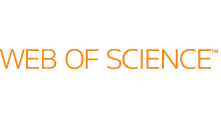
The Web of Science is a paid-access platform that provides access to multiple databases that provide reference and citation data from academic journals, conference proceedings, and other documents in various academic disciplines. It was originally produced by the Institute for Scientific Information. It is currently owned by Clarivate.
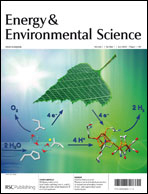
Energy & Environmental Science is a monthly peer-reviewed scientific journal publishing original (primary) research and review articles. The journal covers work of an interdisciplinary nature in the biochemical and biophysical sciences and chemical and mechanical engineering disciplines. It covers energy area. Energy & Environmental Science is published by the Royal Society of Chemistry.
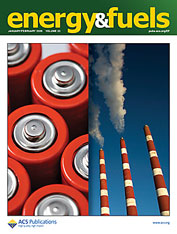
Energy & Fuels is a peer-reviewed scientific journal published by the American Chemical Society. It was established in 1987. Its publication frequency switched from bimonthly to monthly in 2009. The editor-in-chief is Hongwei Wu.
The Journal of Physical Chemistry Letters is a peer-reviewed scientific journal published by the American Chemical Society. The editor-in-chief is Gregory D. Scholes at Princeton University. The Journal of Physical Chemistry Letters covers research on all aspects of physical chemistry. George C. Schatz was editor-in-chief from 2010 to 2019.
Science 2.0 is a suggested new approach to science that uses information-sharing and collaboration made possible by network technologies. It is similar to the open research and open science movements and is inspired by Web 2.0 technologies. Science 2.0 stresses the benefits of increased collaboration between scientists. Science 2.0 uses collaborative tools like wikis, blogs and video journals to share findings, raw data and "nascent theories" online. Science 2.0 benefits from openness and sharing, regarding papers and research ideas and partial solutions.
Photonics and Nanostructures: Fundamentals and Applications is a peer-reviewed scientific journal, published quarterly by Elsevier. The editors-in-chief are A. Di Falco University of St Andrews, M. Lapine University of Technology Sydney, P. Tassin Chalmers University of Technology, M. Vanwolleghem Centre National de la Recherche Scientifique (CNRS), Villeneuve-d'Ascq, L. O'Faolain Cork Institute of Technology.
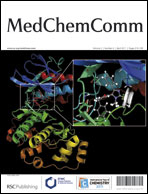
MedChemComm is a peer-reviewed scientific journal publishing original (primary) research and review articles on all aspects of medicinal chemistry, including drug discovery, pharmacology and pharmaceutical chemistry. Until December 2019, it was published monthly by the Royal Society of Chemistry in partnership with the European Federation for Medicinal Chemistry, of which it was the official journal. Authors can elect to have accepted articles published as open access. According to the Journal Citation Reports, the journal has a 2014 impact factor of 2.495, ranking it 27th out of 59 journals in the category "Chemistry, Medicinal" and 163 out of 289 journals in the category "Biochemistry & Molecular Biology".

The San Francisco Declaration on Research Assessment (DORA) intends to halt the practice of correlating the journal impact factor to the merits of a specific scientist's contributions. Also according to this statement, this practice creates biases and inaccuracies when appraising scientific research. It also states that the impact factor is not to be used as a substitute "measure of the quality of individual research articles, or in hiring, promotion, or funding decisions".
Dipankar Das Sarma, popularly known as D.D. Sarma, is an Indian scientist and structural chemist, known for his researches in the fields of Solid State Chemistry, Spectroscopy, Condensed Matter Physics, Materials Science, and Nanoscience. He is a former MLS Chair Professor of Physics and Chairman of the Centre for Advanced Materials and the GAST Professor of Uppsala University, Sweden, A recipient of TWAS Physics Prize and the UNESCO Biennial Javed Husain Prize, Sarma was honored by the Council for Scientific and Industrial Research (CSIR), Government of India, in 1994, with the Shanti Swarup Bhatnagar Prize for Science and Technology.
Murali Sastry is an Indian material chemist, nanomaterial scientist and the chief executive officer of IITB-Monash Research Academy. He is a former chief scientist and Tata Chemicals and a former senior scientist at National Chemical Laboratory. He is known for his studies on surfaces, films and materials chemistry and is an elected fellow of Maharashtra Academy of Sciences and the Indian Academy of Sciences The Council of Scientific and Industrial Research, the apex agency of the Government of India for scientific research, awarded him the Shanti Swarup Bhatnagar Prize for Science and Technology, one of the highest Indian science awards, in 2002, for his contributions to chemical sciences.
